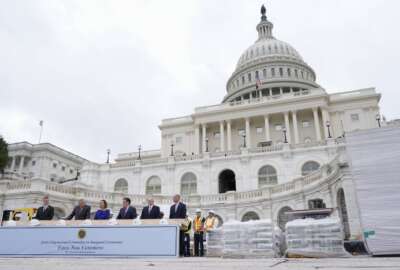Insight by Pluralsight
What’s the best insurance against the federal workforce’s uncertain future? Continuous learning
With cost-cutting and efficiency efforts all but certain to result in workforce reductions, there’s no downside to investing in workforce development.
In his first six months as the owner of Twitter, Elon Musk fired more than 80% of the company’s staff. Now he, along with fellow billionaire Vivek Ramaswamy, will be in charge of the Department of Government Efficiency, a nongovernmental advisory body seeking to improve government operations and cut costs.
This precedent — paired with statements from both Musk and Ramaswamy, as well as the resurgence of Schedule F, a short-lived policy aimed at making it easier to fire federal employees from the first Trump administration — has everyone concerned that federal agencies will be next in line for the Twitter treatment. And if that does turn out to be the case, what will be the impact on federal workforce development initiatives, to say nothing of the impact on the private sector as suddenly unemployed public servants flood the job market?
“Job number one is going to be cutting costs for them. That’s going to be their prime focus. And I don’t think it’s going to be as nuanced as I would like it to be,” said Tony Holmes, director for North America public sector presales at Pluralsight. “They outline their mandate as doing it before 2026. There isn’t going to be that breathing space in which to take that typical governmental, heavily researched, more nuanced approach. I think if it happens, it’s going to be somewhat indiscriminate.”
This will likely create a number of challenges for government agencies, Holmes said. For one thing, government already has difficulty competing with the private sector for top talent, and job stability is one of its main draws. If the kind of chaos that marked Musk’s first year at Twitter happens within the federal government as well, that will only make the job of recruiting more difficult. Agencies will also have to make hard decisions around the priority of various projects, and service delivery will likely suffer, especially if agencies lose institutional knowledge at that scale.
Impact on the private sector
On the other hand, as federal agencies shift priorities to focus more closely on mission-critical functions, federal contractors will likely be called upon to pick up the slack in support functions. And with a sudden flood of former federal employees — many already holding security clearances — in the job market, they’ll be even better equipped than usual to navigate federal processes and procedures.
“When we think about the amount of focus there is on regulation and compliance in the private sector, now you’re suddenly getting access to employees that have lived and breathed the regulatory and compliance world for all of their careers,” Holmes said. “And I think taking this along with some of the cybersecurity talent and cloud talent and data talent within the government is absolutely top notch because you’ve got people that are used to dealing with huge infrastructures and large amounts of data and some of the most strict cybersecurity environments in the world.”
Continuous learning
There is one big caveat to that, however. Holmes said those federal employees need to have been staying on top of their skills. And that’s the best thing they can do to set themselves up in the face of an uncertain future, he said: Take advantage of any and all continuous learning opportunities to be found, starting immediately. While some agencies and offices have programs that actively treat continuous learning as part of the mission, those initiatives are scattershot at best.
And on-the-job training isn’t going to be enough, he said. Federal employees should be considering adjacent subjects to broaden their skillsets. For example, a federal cybersecurity professional may be extremely proficient in that realm; taking learning courses in artificial intelligence or data science could augment those cybersecurity skills to make the employee even more valuable.
“What you’ll find is the federal workers that fare the best are going to be the ones that took that impetus into their own hands and actually pursued it on their own,” Holmes said. “There is no downside because, if the worst does happen and I end up becoming a part of the attrition, then my skill sets are in an amazing state to start looking at some of these private sector roles. And if I don’t become a part of that attrition or if there is no attrition, then I’ve become an incredible asset to the teams that I’m already working with.”
This is, of course, all hypothetical at this point. But no matter what the future of the federal workforce may look like, federal employees and agencies should be putting more emphasis on training. As Holmes says, there’s no downside to investing in continuous learning, at the individual or organizational level.
“Neither the public sector nor the private sector currently invests adequately in continuous learning,” Holmes said. “But it’s something that is always front of mind when we have seismic shifts like this.”
Copyright © 2025 Federal News Network. All rights reserved. This website is not intended for users located within the European Economic Area.





